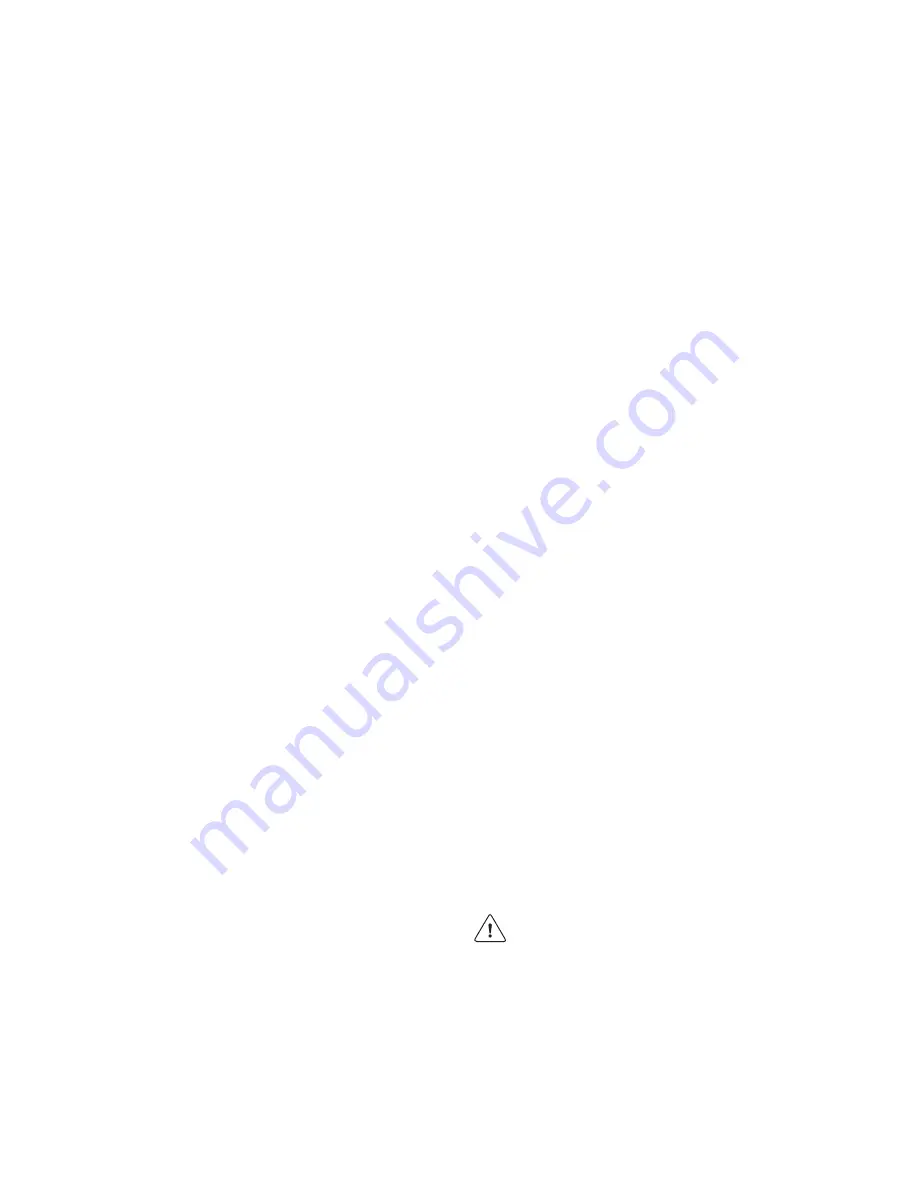
7
Because of consumer demand, preservatives
have been removed from many pre-prepared
foods. This together with the changes in
shopping habits to a once-a-week shop, mean
that safe handling and storage of food is even
more important than ever.
The following tips should help you to ensure that
the food in your home is in as perfect condition
as possible.
¥
Keep the freezer door closed as much as
possible.
¥
Do not push food together too much, try to allow
air to circulate around each item.
¥
Cool cooked food as quickly as possible but do
NOT place in the freezer until cool. (Leave food in
a place as cool as possible in order that it can
then be placed in the freezer as soon as
possible).
¥
Do not store food uncovered.
¥
The best way to defrost food is to put it in the
refrigerator to thaw slowly.
¥
Ensure that food placed in the freezer is dated
and labelled and used in date order to ensure
that food is consumed at its best.
¥
It is important that food is used before its Òbest
beforeÓ date.
¥
Always wash your hands with soapy water and
dry them with a clean towel before handling food.
¥
Keep work surfaces clean and avoid cross
contamination by not using the same work
surface or knife, without washing them thoroughly
in between.
¥
The foods to be frozen must be fresh and of the
best quality.
¥
The size of each pack should be small enough to
ensure that it is used in one go . Small packs
freeze more quickly and uniformly and give better
results.
¥
Frozen food, once thawed, must not be refrozen.
Lean food keeps better and longer than fatty
food, salt reduces the storage time.
¥
Wrap the food in polythene or aluminium freezing
bags or foil so that they adhere to the food and
provide an airlight seal .
¥
Packaging which is swollen or has traces of
refrozen water droplets on the pack could
indicate that the product has not been kept at a
suitable temperature and that it may have lost its
original quality. Partially thawed food must not be
refrozen, it must be consumed within 24 hours.
Never exceed the storage times indicated by the
manufacturer.
¥
Never place hot food, bottles or cans of fizzy
drink in the freezer as they may explode.
Containers with a lid must not be filled to the
brim.
¥
Do not open the door or place extra fresh food in
the freezer next to food which is already frozen
as this could cause the temperature of the frozen
food to rise and its quality and storage life to
reduce .
HEALTH AND SAFETY GUIDELINES
MAINTENANCE AND CLEANING
Before any maintenance or cleaning work is carried
out, DISCONNECT the appliance from the
ELECTRICITY supply.
Internal cleaning
Clean the inside and accessories with warm water
and bicarbonate of soda (5ml to 0.5 litre of water).
Rinse and dry thoroughly.
NEVER USE DETERGENTS, ABRASIVE
POWDERS, HIGHLY PERFUMED
CLEANING PRODUCTS OR WAX
POLISHES, TO CLEAN THE INTERIOR AS
THESE WILL DAMAGE THE SURFACE AND
LEAVE A STRONG ODOUR.


































